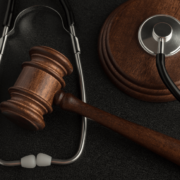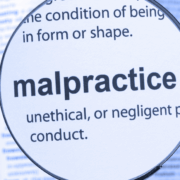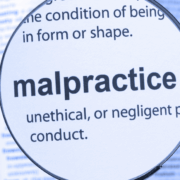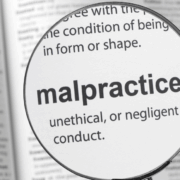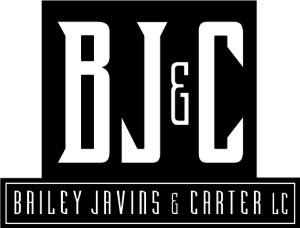What to Expect During a Medical Malpractice Lawsuit in West Virginia
Facing the aftermath of a medical procedure that resulted in unexpected harm or injury can be an incredibly distressing experience. Beyond the physical and emotional turmoil, the thought of navigating a legal proceeding, such as a medical malpractice lawsuit or medical negligence claim, can seem overwhelming.
Defining Medical Malpractice Under West Virginia Law
Before delving into the lawsuit process, it’s essential to grasp what constitutes medical malpractice, sometimes referred to as clinical negligence or physician error, under the legal framework of West Virginia. It’s more than just an undesirable medical outcome; it involves specific elements that must be proven.
What Constitutes Medical Malpractice?
In West Virginia, a medical malpractice claim arises when a healthcare provider (which can include doctors, surgeons, nurses, hospitals, clinics, or other medical professionals and entities) deviates from the recognized and accepted standard of care in their profession, and this breach of medical duty directly causes injury or harm to a patient. To successfully pursue such a cause of action, the injured party (the plaintiff or claimant) generally needs to establish four core elements by a preponderance of the evidence (meaning it is more likely than not):
- Duty: A provider-patient relationship existed, creating a legal duty of care for the healthcare provider to deliver competent medical services. This is often straightforward to establish through medical records indicating treatment was sought and provided.
- Breach: The healthcare provider violated or breached that duty of care by failing to act as a reasonably prudent and skilled provider in the same or similar field would have under similar circumstances. This often involves proving a deviation from accepted medical practice.
- Causation: This critical link, often termed the proximate cause, requires showing that the provider’s breach of the standard of care was a direct and foreseeable cause of the patient’s injury, worsened condition, or damages. It’s not enough that a mistake was made; that mistake must have led to the negative outcome.
- Damages: The patient suffered actual, compensable harm as a result of the breach of duty. These damages can be physical (e.g., physical impairment, disfigurement), emotional (e.g., psychological trauma, emotional distress), and/or financial (e.g., additional medical bills, lost income).
Common Scenarios that May Constitute Medical Malpractice or Negligence
While every case turns on its specific facts, some illustrative examples of situations that might give rise to a medical negligence claim if the elements above are met include:
- Significant diagnostic errors, such as a misdiagnosis, failure to diagnose, or delayed diagnosis of a serious condition like cancer or heart disease.
- Surgical errors, including operating on the wrong body part, leaving surgical instruments inside a patient (retained surgical object), or causing unnecessary surgical complications due to substandard medical care.
- Birth injuries or birth trauma resulting from obstetric negligence during labor or delivery, potentially leading to conditions like cerebral palsy or Erb’s palsy.
- Medication errors, such as prescribing the wrong drug, an incorrect dosage (prescription error), or administering a medication to which the patient has a known allergy, leading to an adverse drug event.
- Anesthesia errors that result in patient harm, including anesthesia awareness or oxygen deprivation.
- Failure to treat or provide appropriate follow-up care.
- Hospital-acquired infections linked to negligent sanitation or procedures.
- Lack of informed consent, where a provider fails to adequately explain the risks of a procedure, and the patient suffers a known risk they were not informed about.
Distinguishing Harm from Negligence
It is vital to understand that not all unfavorable medical outcomes or poor medical outcomes constitute medical malpractice. Medicine is not an exact science, and complications can arise even when the best possible care is provided. The law requires demonstrating a specific departure from good and accepted medical practice that caused the detriment suffered.
Initial Considerations & Mandatory Pre-Lawsuit Steps in West Virginia
If you suspect medical malpractice, acting promptly and understanding West Virginia’s specific pre-lawsuit requirements is paramount. Failure to adhere to these rules can jeopardize your ability to pursue a legal remedy.
The Importance of Timeliness: Statutes of Limitation & Repose
West Virginia law sets strict deadlines, known as statutes of limitation, for filing a medical malpractice lawsuit. Missing these deadlines generally means losing the right to sue, regardless of the merits of your claim.
- General Statute of Limitations (WV Code §55-7B-4): Typically, a medical malpractice action must be “commenced within two years of the date of such injury, or within two years of the date when such person discovers, or with the exercise of reasonable diligence, should have discovered such injury, whichever last occurs.”1 This is often referred to as the discovery rule.
- Specific Statute for Nursing Homes, etc. (WV Code §55-7B-4(b)): For claims against a nursing home, an assisted living facility, or a distinct part of an acute care hospital providing intermediate or skilled nursing care (or their employees), the time limit to sue is shorter: “one year of the date of such injury, or within one year of the date when such person discovers, or with the exercise of reasonable diligence, should2 have discovered such injury…”3
- Provisions for Minors: If the injured patient was a child under the age of ten at the time of the medical injury, the action must be commenced within two years of the date of injury or prior to the child’s twelfth birthday, whichever period is longer.
- Statute of Repose (WV Code §55-7B-4(d)): Importantly, West Virginia has a statute of repose. This law states that “in no event shall any such action be commenced more than ten years after the date of the medical injury,”4 with very limited exceptions. This is an absolute filing deadline regardless of when the injury was discovered.
These tolling provisions and deadlines highlight why seeking legal counsel promptly is so important.
Pre-Suit Notice of Claim (WV Code §55-7B-6)
Before a medical malpractice lawsuit can be formally filed in court, West Virginia Code §55-7B-6 mandates that the claimant (the injured party or their representative) must provide a “Notice of Claim” to each healthcare provider they intend to sue. This notice must be served by certified mail, return receipt requested, at least thirty (30) days prior to filing the complaint. The Notice of Claim must include:
- A statement of the theory or theories of liability upon which the cause of action may be based (i.e., how the provider was allegedly negligent).
- A list of all healthcare providers and healthcare facilities to whom notices of claim are being sent.
The Screening Certificate of Merit (WV Code §55-7B-6)
Accompanying the Notice of Claim must be a “Screening Certificate of Merit.” This is a critical document in West Virginia medical professional liability cases.
- Purpose: The certificate serves to demonstrate to the court and the defendants that the claim has been reviewed by a qualified healthcare provider and is believed to have merit, helping to filter out frivolous lawsuits.
- Requirements for the Certifying Healthcare Provider: The certificate must be executed under oath by a healthcare provider who:
- Is qualified as an expert under the West Virginia Rules of Evidence.
- Meets specific requirements regarding licensure and active clinical practice or teaching in their medical field or specialty (generally, devoting at least 60% of their professional time to such activities at the time of the alleged injury).
- Is familiar with the applicable standard of care at issue.
- Content of the Certificate: The Screening Certificate of Merit must state with particularity:
- The certifying provider’s qualifications.
- The basis for their familiarity with the applicable standard of care.
- Their opinion as to how the applicable standard of care was breached.
- Their opinion as to how the breach resulted in injury or death to the claimant.
- A list of all medical records and other information reviewed by the certifying provider.
Obtaining a proper Screening Certificate of Merit is a complex step that often requires the assistance of legal counsel experienced in these medical mistake cases.
Seeking Legal Counsel
Given the intricate legal and medical issues involved in substandard medical care claims, and the strict procedural requirements like the Notice of Claim and Certificate of Merit, discussing your situation with legal counsel familiar with West Virginia’s medical malpractice laws early in the process is highly advisable. An attorney can help evaluate your potential claim, ensure deadlines are met, and guide you through these initial hurdles.
The Formal Lawsuit: Filing and the Discovery Phase
Once the rigorous pre-suit requirements for medical malpractice in West Virginia have been meticulously met, the path forward shifts from a period of investigation and statutory compliance to the formal battleground of litigation.
This transition marks a significant escalation in the legal process. The pre-suit phase, with its certificate of merit and expert review, serves as a gatekeeper, ensuring that only cases with a legitimate foundation proceed.
The formal lawsuit, however, is a full-scale legal action, characterized by formal pleadings and an intensive, often protracted, information-gathering period known as discovery. This is the phase where the case is built—or dismantled—piece by piece.
Commencing the Lawsuit: The Complaint
The lawsuit is formally initiated when the plaintiff, through their attorney, files a Complaint with the appropriate Circuit Court in West Virginia. This is not merely a piece of paper; it is the foundational document of the entire case, a meticulously drafted legal pleading that frames the allegations and demands for justice. The Complaint must adhere to specific legal requirements to be valid.
Within this critical document, the plaintiff’s attorney must identify the parties involved, specifically the plaintiff(s) and the defendant(s), which could include a doctor, a nurse, a hospital, or an entire medical group.
It then proceeds to outline the factual allegations that form the basis of the medical malpractice claim, detailing the chronology of events, the treatment provided, and the alleged negligence.
Importantly, the Complaint must also state the legal theories of liability, which in medical malpractice is almost always negligence, specifically a breach of the standard of care.
This is the legal cornerstone of the claim, asserting that the healthcare provider’s conduct fell below the accepted standard of practice for a reasonably prudent professional under similar circumstances.
The document must also describe in detail the injuries and damages suffered by the plaintiff, which can range from physical pain and suffering to financial burdens. Finally, the Complaint concludes with a request for relief from the court, which is typically a demand for monetary damages to compensate the plaintiff for their losses.
Once filed, the Complaint and a Summons—a legal document notifying the defendant that they are being sued—must be formally served upon each defendant. This process of service is a critical legal requirement. It ensures that the defendant has proper notice of the lawsuit and a fair opportunity to respond. Service of process must be performed correctly; an error in this step could result in the entire lawsuit being dismissed.
The Defendant’s Response: The Answer and Affirmative Defenses
Upon being served with the Complaint and Summons, each defendant is given a specific period, usually 30 days in West Virginia Circuit Court, to file an Answer. The Answer is the defendant’s formal response to the plaintiff’s allegations. From a legal and strategic standpoint, the Answer is designed to contest the plaintiff’s claims and lay the groundwork for the defense.
In the Answer, the defendant will typically admit or deny each allegation made in the Complaint. In many medical malpractice cases, the defendant will deny most, if not all, of the plaintiff’s allegations, forcing the plaintiff to prove every element of their case. This is a common legal tactic; a denial is not necessarily an admission of wrongdoing, but rather a formal statement that the defendant disputes the plaintiff’s version of events and intends to challenge them in court.
Beyond simple admissions and denials, the Answer is also where the defendant asserts any affirmative defenses. An affirmative defense is a legal argument that, even if the plaintiff’s allegations are true, the defendant is not legally liable. Examples of affirmative defenses in West Virginia medical malpractice cases can include:
- Statute of Limitations: The defense argues that the lawsuit was filed after the legally mandated time limit had expired.
- Comparative Negligence: The defense claims that the plaintiff’s own actions or inaction contributed to their injury, thereby reducing or even eliminating the defendant’s liability.
- Contributory Negligence: While most states have moved to comparative negligence, some jurisdictions still use this. It asserts that if the plaintiff was even 1% at fault, they cannot recover any damages.
- Failure to Mitigate Damages: The defendant argues that the plaintiff did not take reasonable steps to minimize their injuries after the alleged malpractice occurred, such as failing to follow a doctor’s orders.
- Lack of Causation: A defense that is central to many med-mal cases, this asserts that even if the defendant breached the standard of care, that breach was not the direct cause of the plaintiff’s injuries.
Uncovering the Facts: The Discovery Process
Following the exchange of the Complaint and Answer, the litigation enters the Discovery phase. This is often the longest, most intensive, and most costly part of the entire lawsuit.
Discovery is a formal, court-supervised process where both sides are compelled to gather and share all evidence and information relevant to the case.
The rules governing this process are outlined in the West Virginia Rules of Civil Procedure and are designed to prevent “trial by ambush” by ensuring all parties have access to the same information. This phase is a strategic undertaking, allowing attorneys to identify the strengths and weaknesses of both their own case and their opponent’s.
Key discovery tools include:
- Interrogatories: These are written questions that one party sends to the other. They must be answered in writing and under oath, typically by the party themselves. Interrogatories are useful for gathering a wide range of factual information, such as the names and contact information of witnesses, the specifics of the injuries and damages, and the party’s general version of the events. They serve to narrow down the issues and provide a roadmap for more detailed inquiry.
- Requests for Production of Documents: This is arguably the most critical discovery tool in a medical malpractice case. It allows parties to formally demand relevant documents from each other. For the plaintiff, this means obtaining the defendant’s complete medical records, including charts, physician’s notes, billing statements, diagnostic images (X-rays, MRIs), and lab results. It can also include internal hospital policies and procedures, peer review reports, incident reports, and correspondence between the healthcare providers. In the modern era of Electronic Health Records (EHRs), requests may also focus on metadata or audit trails to determine if and when records were altered.
- Depositions: A deposition is sworn, out-of-court testimony given by a party or a witness. It takes place in a conference room with a court reporter present to transcribe every word, and attorneys for all parties are there to ask questions. Depositions serve two primary purposes: to gather facts and to assess the credibility of the witness. The testimony is recorded, creating a binding transcript that can be used later at trial. If a witness’s trial testimony deviates from their deposition testimony, the deposition transcript can be used to impeach their credibility. Depositions are a powerful tool for locking in a witness’s story and revealing their demeanor under pressure.
- Requests for Admission: A more focused discovery tool, this involves one party asking the other to admit or deny specific facts or legal conclusions. The goal is to reduce the number of issues that must be proven at trial. For example, a plaintiff might ask a defendant to admit that they were the on-call physician at a specific time. If the defendant admits the fact, it does not need to be proven at trial, saving time and resources.
- Independent Medical Examinations (IMEs): In some cases, the defense may request that the plaintiff undergo an examination by a physician of their choosing. The purpose of an IME is to allow the defense to have their own expert review the plaintiff’s injuries and medical condition. While the name suggests independence, it is crucial to understand that the physician performing the IME is selected and paid for by the defense. Their findings are often used to challenge the plaintiff’s claims regarding the severity, cause, or permanence of their injuries.
The Pivotal Role of Medical Experts
Throughout the discovery phase, the role of medical experts is pivotal. The entire case hinges on the opinions of these professionals. Juries and judges, not being doctors, cannot be expected to know the appropriate standard of care for a cardiologist or an orthopedic surgeon. This is where experts come in. They are called upon to:
- Establish the Standard of Care: The expert must first define what a reasonably prudent healthcare provider would have done under the same or similar circumstances.
- Identify the Breach: The expert must then explain how the defendant’s actions or inactions deviated from that established standard.
- Establish Causation: The expert’s most crucial role is to link the breach of the standard of care directly to the plaintiff’s injury. Without this link, there is no medical malpractice case. The expert must be able to state, to a reasonable degree of medical certainty, that the defendant’s negligence was a proximate cause of the plaintiff’s harm.
The discovery phase allows attorneys for both sides to depose each other’s experts, questioning them on their qualifications, their opinions, and the medical literature they relied upon. This is a crucial step in preparing for trial and often determines whether a case will proceed to a jury or be settled beforehand. Ultimately, the discovery phase is a search for truth and a strategic chess match, providing the necessary information for both parties to make an informed decision on whether to proceed to trial or engage in settlement negotiations.
Pathways to Resolution – Negotiation, Mediation, and Trial
Not all medical malpractice lawsuits proceed to a full trial. Many are resolved through negotiation, settlement, or alternative dispute resolution methods like mediation.
Settlement Discussions
Settlement discussions can occur at almost any point during the litigation process, from before the lawsuit is filed until even during or after a trial. A settlement is a voluntary agreement between the parties to resolve the claim for an agreed-upon sum of money or other terms, thereby avoiding the uncertainty and expense of a trial. Factors influencing settlement include the perceived strength of the evidence, the severity of the injuries, the potential costs of continued litigation, and the willingness of both sides to compromise. The insurance company for the healthcare provider is typically heavily involved in settlement negotiations.
Mediation in West Virginia
Mediation is a common form of Alternative Dispute Resolution (ADR) in West Virginia medical malpractice cases.
- Process: It involves a neutral third-party mediator (often an experienced attorney or retired judge) who facilitates confidential discussions between the parties to help them reach a mutually agreeable settlement. The mediator does not impose a decision but rather helps the parties explore options and find common ground.
- Pre-Suit Mediation: As mentioned earlier (WV Code §55-7B-6(g), (h)), a healthcare provider who receives a Notice of Claim can demand mediation before a lawsuit is filed. If demanded, this mediation must be concluded within 45 days of the written demand.
- Benefits: Mediation can be a less costly, quicker, and less adversarial way to resolve a legal dispute than going to trial. It allows the parties to have more control over the outcome.
Proceeding to Trial
If settlement negotiations and mediation are unsuccessful, the case will proceed to trial. A medical malpractice trial is a formal court proceeding where both sides present their evidence and arguments to a judge and, typically, a jury.
- Key Trial Stages:
- Jury Selection (Voir Dire): Attorneys for both sides question potential jurors to select an impartial panel.
- Opening Statements: Each attorney presents an overview of their case and what they intend to prove.
- Presentation of Evidence:
- The plaintiff presents their case-in-chief first, calling witnesses (including the injured party, family members, fact witnesses, and individuals offering medical opinions regarding the standard of care, breach, and causation) and submitting exhibits (like medical records and demonstrative evidence). Witnesses undergo direct examination by the attorney who called them and cross-examination by the opposing attorney.
- The defendant then presents their defense, which may include their own witnesses (including the defendant provider(s) and individuals offering contrary medical opinions) and evidence.
- Closing Arguments: Attorneys summarize their evidence and argue why the jury should rule in their favor.
- Jury Instructions: The judge provides the jury with instructions on the applicable law they must follow in their deliberations.
- Jury Deliberation and Verdict: The jury retires to deliberate in private and then returns a verdict, deciding whether the defendant(s) were negligent and, if so, the amount of damages to award.
- The Burden of Proof: Throughout the trial, the plaintiff bears the burden of proof to establish each element of their medical malpractice claim by a “preponderance of the evidence.”
Trials can be lengthy, complex, and emotionally taxing for all involved.
The Conclusion of the Lawsuit and What Follows
Reaching the end of a medical malpractice lawsuit can bring a sense of relief, but there may still be further steps or considerations.
Receiving a Judgment or Settlement
- Settlement: If a settlement agreement is reached, it will involve signing legal documents (e.g., a release) and the agreed-upon compensation will be paid, often by the healthcare provider’s medical liability insurance carrier. The structure of the payout (lump sum or structured settlement over time) will be part of the agreement.
- Judgment: If the case goes to trial and a verdict is rendered in favor of the plaintiff, the court will enter a judgment for the amount of damages awarded by the jury (subject to any applicable caps or reductions). Collecting a judgment can sometimes involve further legal steps if the defendant or their insurer does not pay voluntarily.
The Possibility of Appeals
If either the plaintiff or the defendant believes that significant legal errors occurred during the trial that unfairly affected the outcome, they may have the right to appeal the verdict or judgment to a higher court, such as the West Virginia Supreme Court of Appeals. An appeal is not a new trial; rather, the appellate court reviews the record of the trial court proceedings to determine if reversible errors of law were made. Appeals can add considerable time and expense to the overall litigation process.
Emotional and Time Considerations
It cannot be overstated that pursuing a medical malpractice claim is often a lengthy and emotionally draining legal contest. These cases can take years to resolve, from the initial investigation through discovery, negotiations, and potentially trial and appeals. The process can be stressful for plaintiffs and their families, who are often already dealing with the consequences of a serious medical injury or loss. Patience and realistic expectations regarding the timeline are important.
The Importance of Experienced Legal Guidance
Navigating the complexities of West Virginia medical malpractice law, with its specific procedural rules, evidentiary standards, and damage caps, requires considerable legal acumen. Throughout this challenging journey, the guidance of legal counsel who is skilled in handling these types of complex litigation matters can be invaluable in protecting your rights and presenting your case effectively.
Contact Bailey, Javins, & Carter, L.C. for Medical Malpractice Claims in West Virginia
The attorneys at Bailey, Javins, & Carter, L.C. have a long history of handling complex litigation matters for individuals and families in West Virginia. We understand that dealing with the consequences of a potential medical error is incredibly difficult, and the legal system can appear formidable.
If you have questions about a potential medical malpractice situation and what to expect from the legal process in West Virginia, we invite you to contact us for a free consultation and case assessment to discuss your specific circumstances.



